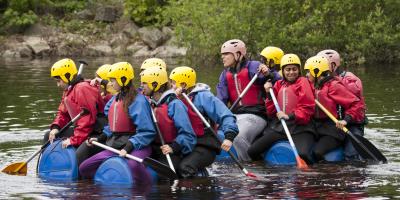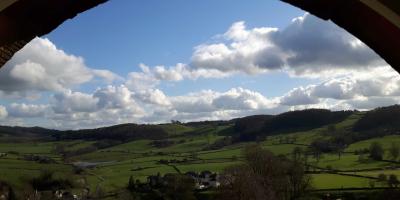Keeping warm during an outdoor adventure sounds straightforward, but it's easy (and sometimes quite dangerous) to go wrong. Here are some of our top safety tips for how to stay safe when wandering during winter…
Layer up
Layering is the most versatile way of staying warm. At it's most basic, this requires a wicking base layer (merino is good in winter or a synthetic base layer if you are allergic to wool), a warming mid-layer such as a fleece, an insulated jacket and a waterproof jacket. If it's really cold, long johns are a good idea too. Go on some shorter walks first and find out what works for you. You should also take at least two pairs of gloves (one inner pair), a hat and gaiters depending on the weather and ground conditions.
Keep hydrated
It's often hard to remember to keep drinking when it's cold as you don't tend to feel as thirsty as you do when hiking in the heat of summer. Water is perfect for re-hydration, of course, and if you're carrying a flask, hot fruit squash is the most hydrating option – although for short winter walks nothing beats a flask of tea or hot chocolate.
Happy feet
Always take thick socks (and a spare pair if your socks get wet) plus a good pair of walking boots. Many boots have a waterproof lining which is good for wet and snowy conditions. For serious walking in snow and ice you'll need crampons or microspikes and a pair of compatible boots, but you can also get good ice-grippers for boots for lower level winter walks too.
Be prepared
It’s a good idea to use a bigger backpack in winter. Not only will you need more fuel (and a flask of tea) but on serious walks you can include a multi-person group shelter or bivvy bag, as well as essentials like extra food, a first aid kit and a head torch (with spare batteries). On clear days in the snow, sun cream and sunglasses are important too to protect your skin and eyes,
Winter packing checklist
- Rucksack
- Emergency bivvy bag
- Waterproof jacket and trousers
- Map and compass
- Headlamp plus spare batteries
- Walking boots
- Gaiters
- Drink, food and snacks (plus extra food)
- Whistle
- First aid kit
- Hat and two pairs of gloves
- Spare dry warm layer
- Sunglasses and sunscreen (in snow)
Discover winter breaks with YHA.






